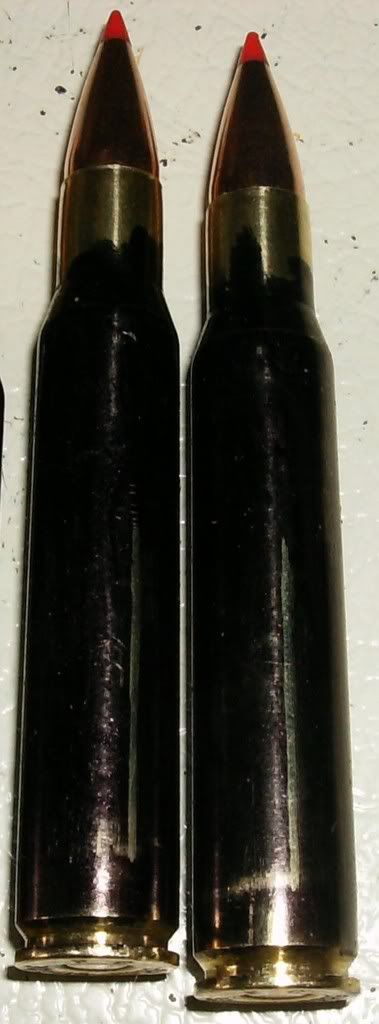24" barrel, fantastic cut of walnut for the stock, you have to see it to be able to make out the good looking shades and grains in the wood. Great bluing job, very satiny black finish and it's wearing a Bushnell 3-9x50mm 3200 Elite scope in Leupold rings.

Here's the trouble. When I chambered the rounds, some chambered just fine and others offered a degree of resistance.
Now, there are several possible explainations with that. One could be the bullets being seated too far forward, so that on chambering, the bullet is being driven against the rifling. It should not be encountering rifling, as this will affect your pressure, jacking it up and possibly causing bad results.
But I checked the round. They measured the 3.170" I wanted, and factory rounds with different bullets are much longer. So that's not it.
Maybe the shoulder was not set back far enough? When you use a reloading press to force fired brass into a full length sizing die, it compacts it by squeezing it back to what should be factory dimensions. If your die is not screwed into the press to the proper depth though, the casing won't be pushed in far enough to be properly resized.
But no, comparing the length to drawing and schematics, and to a factory round. Shoulders were fine.
After talking to some friends online who forget more about reloading than I will ever know, I narrowed down the cause. It took coating the bullets in black magic marker to become apparent. On chambering, whichever part of the round is making the friction, it will have the magic marker scraped off and you can immediately see your bugbear.

You can see my problem right off, starting a quarter inch up from the bottom of the case. The case head is too large.
Turns out the explaination is really simple.
This brass came from my M1 Garand and was mixed into my other 30-06 casings. The Garand (as do most military rifles) has a larger chamber, so the casings are coming out with a funny shape. If I cannot load a bullet quickly, it is at worst an inconvenience. For a US soldier or Marine in 1944, it was a matter of life and death. Their ammo was sometimes gritty and dirty, and sometimes not all made to the exact same specs. To feed easier, chambers were slightly larger than those in civilian rifles.
My RCBS full length die doesn't have the horsepower to cram the Garand brass case heads back to proper shape. There's two possible remedies. The first is buying a small base die, a special die made just for this problem, or switching to a Lee die set. I like my Lees and they seem to form a little tighter. I think I'll try the Lee.
The good news is, I can still shoot this ammo for now. It's just a little stiff to chamber.
Hope this helps someone someday!

No comments:
Post a Comment